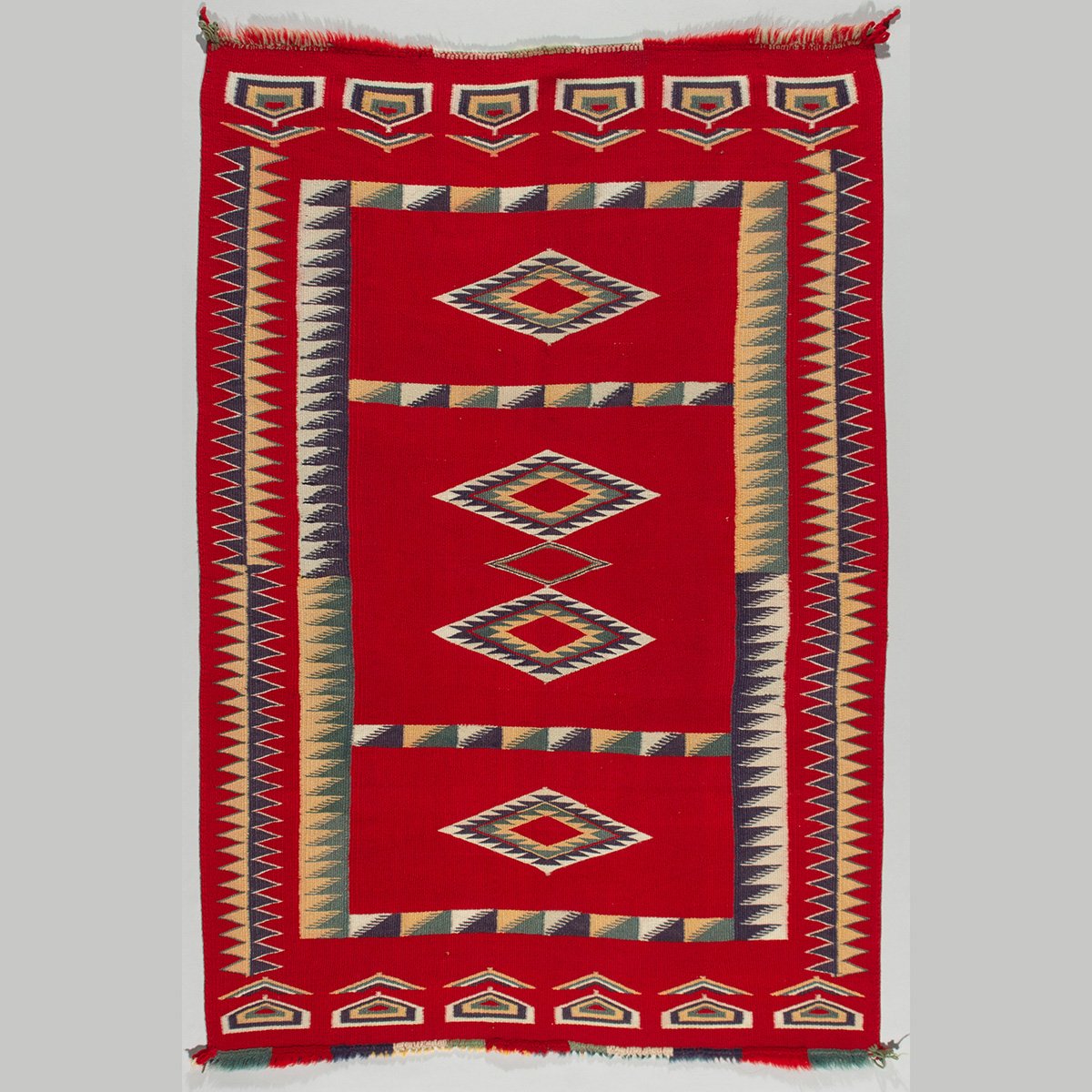 Image 1 of 6
Image 1 of 6

 Image 2 of 6
Image 2 of 6

 Image 3 of 6
Image 3 of 6

 Image 4 of 6
Image 4 of 6

 Image 5 of 6
Image 5 of 6

 Image 6 of 6
Image 6 of 6

Navajo Germantown Weaving
1890
Height 46 1/2" Width 32 1/2"
Provenance: Tom Delach, Boston, MA
Until the introduction of railroads and trading posts, all Navajo weaving was done with homespun wool yarn. Colors were limited to natural wool colors and local vegetal dyes. Some early blanket weaving's occasionally included Indigo and Cochineal dyes. Beginning in 1870 to 1875, the Navajo weavers began to have access to commercially spun and dyed wool yarns. The earliest were often three-ply yarns, which is one method of dating older weaving's. After 1875 the yarns were mostly four-ply and provided by the early traders to some of their better weavers. The majority of these commercial wool yarns were produced at the mills at Germantown, Pennsylvania. They were sent out by train via the newly constructed railroad to these early trading posts on the reservation. This introduction of colorful yarns, never before seen by the Navajos, caused a dramatic shift in Navajo weaving- and we see an explosion of colorful, eye-dazzling designs during this period.
1890
Height 46 1/2" Width 32 1/2"
Provenance: Tom Delach, Boston, MA
Until the introduction of railroads and trading posts, all Navajo weaving was done with homespun wool yarn. Colors were limited to natural wool colors and local vegetal dyes. Some early blanket weaving's occasionally included Indigo and Cochineal dyes. Beginning in 1870 to 1875, the Navajo weavers began to have access to commercially spun and dyed wool yarns. The earliest were often three-ply yarns, which is one method of dating older weaving's. After 1875 the yarns were mostly four-ply and provided by the early traders to some of their better weavers. The majority of these commercial wool yarns were produced at the mills at Germantown, Pennsylvania. They were sent out by train via the newly constructed railroad to these early trading posts on the reservation. This introduction of colorful yarns, never before seen by the Navajos, caused a dramatic shift in Navajo weaving- and we see an explosion of colorful, eye-dazzling designs during this period.
1890
Height 46 1/2" Width 32 1/2"
Provenance: Tom Delach, Boston, MA
Until the introduction of railroads and trading posts, all Navajo weaving was done with homespun wool yarn. Colors were limited to natural wool colors and local vegetal dyes. Some early blanket weaving's occasionally included Indigo and Cochineal dyes. Beginning in 1870 to 1875, the Navajo weavers began to have access to commercially spun and dyed wool yarns. The earliest were often three-ply yarns, which is one method of dating older weaving's. After 1875 the yarns were mostly four-ply and provided by the early traders to some of their better weavers. The majority of these commercial wool yarns were produced at the mills at Germantown, Pennsylvania. They were sent out by train via the newly constructed railroad to these early trading posts on the reservation. This introduction of colorful yarns, never before seen by the Navajos, caused a dramatic shift in Navajo weaving- and we see an explosion of colorful, eye-dazzling designs during this period.

